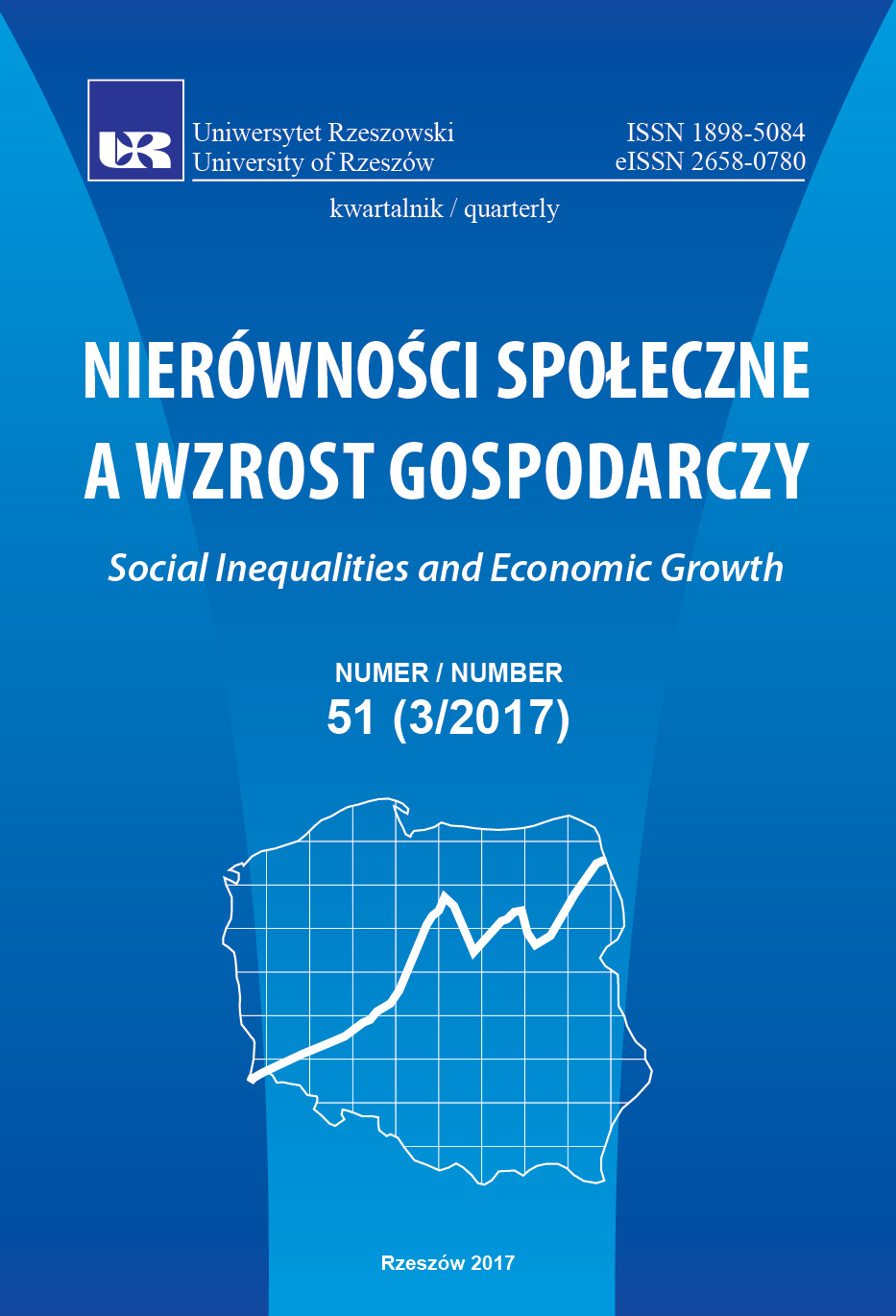Modernizacja etnicznego kapitału ludzkiego – przypadek Romów
DOI:
https://doi.org/10.15584/nsawg.2017.3.24Słowa kluczowe:
Romowie, dyskryminacja, ubóstwo społeczne, kapitał społeczny, kapitał ludzkiAbstrakt
Inwestowanie w każdą formę kapitału będzie skutkowało jego rozwojem i modernizacją. Konieczny do tego jest jednak przynajmniej jego podstawowy poziom. Romski kapitał ludzki jest na bardzo niskim poziomie. Wynika to z ich specyfiki kulturowej, która wpływa na ich sytuację społeczno- gospodarczą. Dlatego też nie można oczekiwać, że modernizacja romskiego kapitału ludzkiego będzie przeprowadzana na tym samym poziomie jak w przypadku społeczeństwa większościowego. Próby jego modernizacji realizowane w ramach funduszy strukturalnych nie przynoszą oczekiwanych rezultatów. Wzmacnianie romskiego kapitału ludzkiego poprzez różne formy edukacji i nabywania umiejętności oraz kompetencji – nawet w powiązaniu ze zwiększaniem atrakcyjności Romów na rynku pracy – są niewystarczające. Konieczne jest objęcie inwestycjami także ich sytuacji zdrowotnej oraz mieszkalnictwa. Takie działania realizowane są w ramach ramowej strategii Unii Europejskiej. Ze względu na niski poziom efektywności tych działań należy zwrócić uwagę na romski kapitał społeczny, który, jak w przypadku każdej mniejszości etnicznej, jest o wiele lepiej rozwinięty niż kapitał ludzki. Pomimo jego znacznego poziomu, pozostaje on kapitałem wewnętrznym, bez tworzenia więzi wykraczających poza ich społeczność. Taka forma kapitału społecznego nie tylko utrwala istniejące podziały społeczne, ale i sprzyja wykluczeniu. Modernizacja kapitału społecznego powinna prowadzić do jego pozytywnego wpływu na spójność społeczną i gospodarczą. Jedynym sposobem na to, aby tego dokonać, jest podjęcie przez społeczeństwo większościowe wysiłku porzucenia dyskryminacji. Może to skutkować zwiększeniem promienia zaufania społecznego, który jest istotnym czynnikiem struktury kapitału społecznego. Dopiero tak zmodernizowany kapitał społeczny będzie mógł być podstawą do budowania romskiego kapitału ludzkiego.Downloads
Download data is not yet available.
Pobrania
Opublikowane
2020-11-13
Jak cytować
Szewczyk, M. (2020). Modernizacja etnicznego kapitału ludzkiego – przypadek Romów. Nierówności Społeczne a Wzrost Gospodarczy, 3(51), 305–315. https://doi.org/10.15584/nsawg.2017.3.24
Numer
Dział
Artykuły
Licencja
Prawa autorskie (c) 2017 Uniwersytet Rzeszowski

Utwór dostępny jest na licencji Creative Commons Uznanie autorstwa – Na tych samych warunkach 4.0 Miedzynarodowe.


